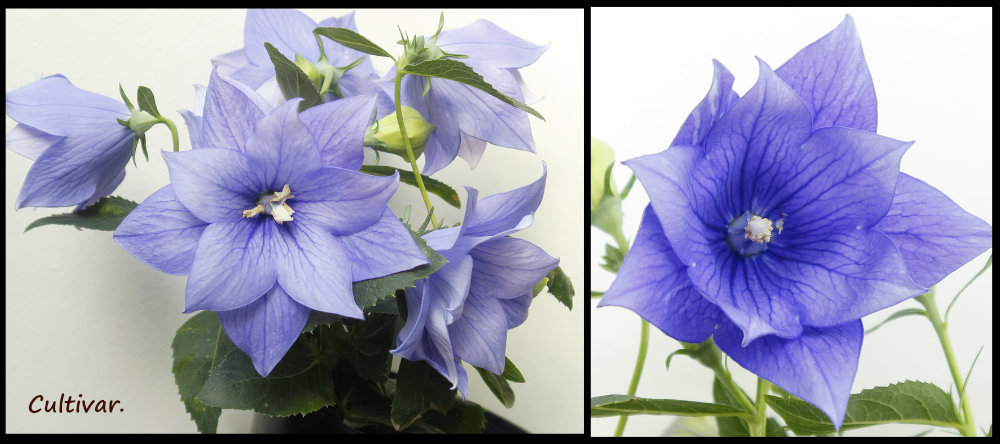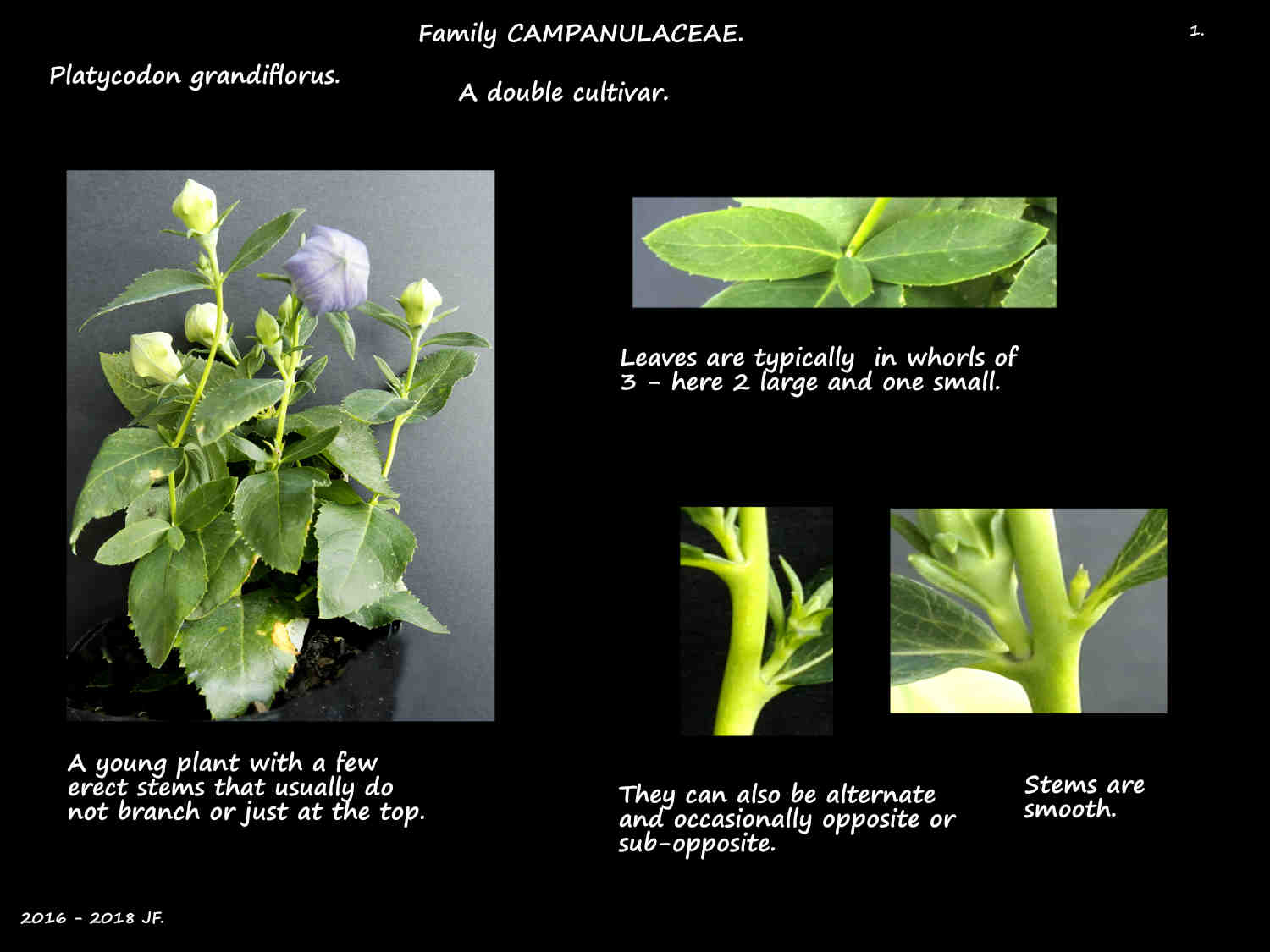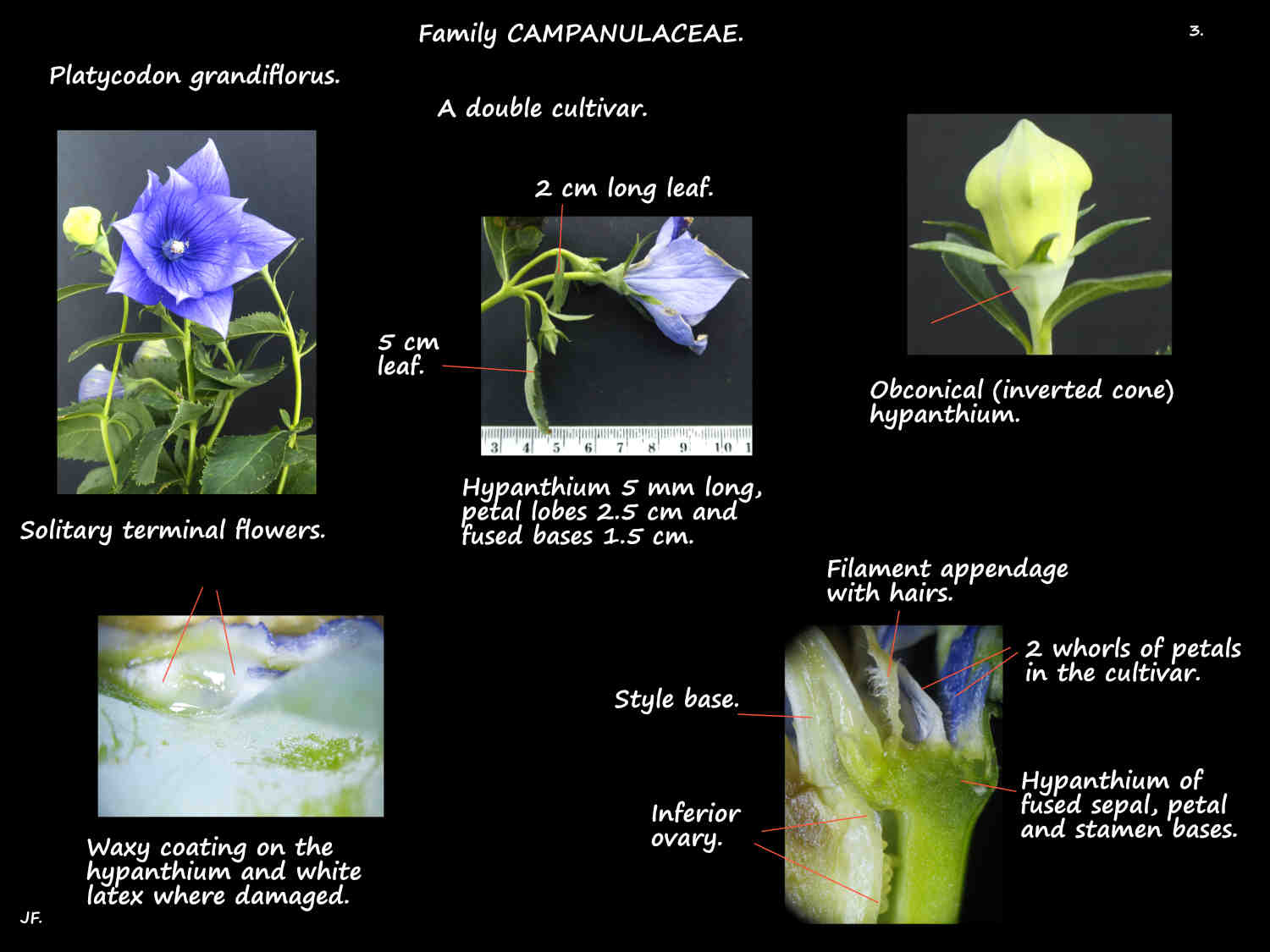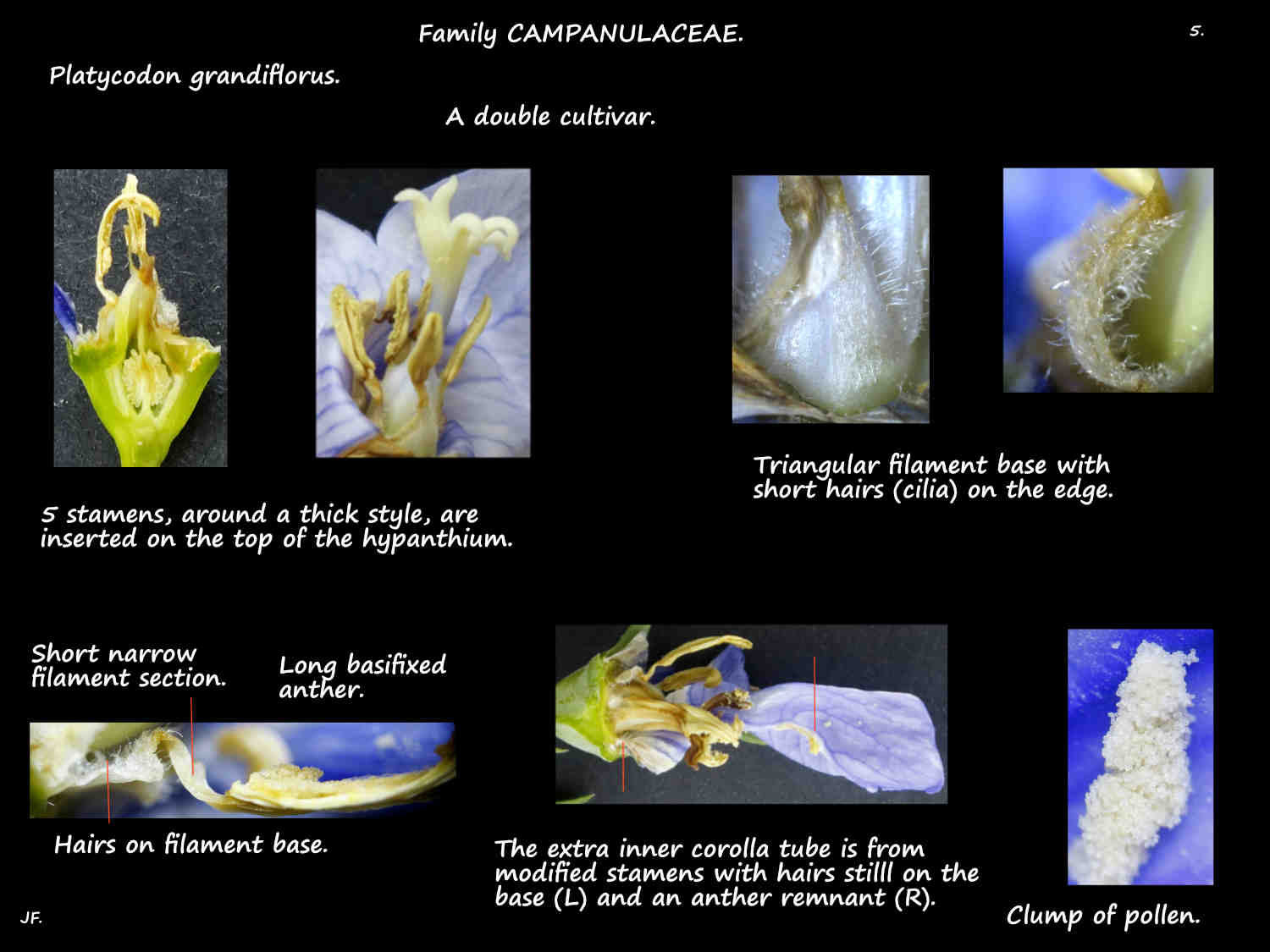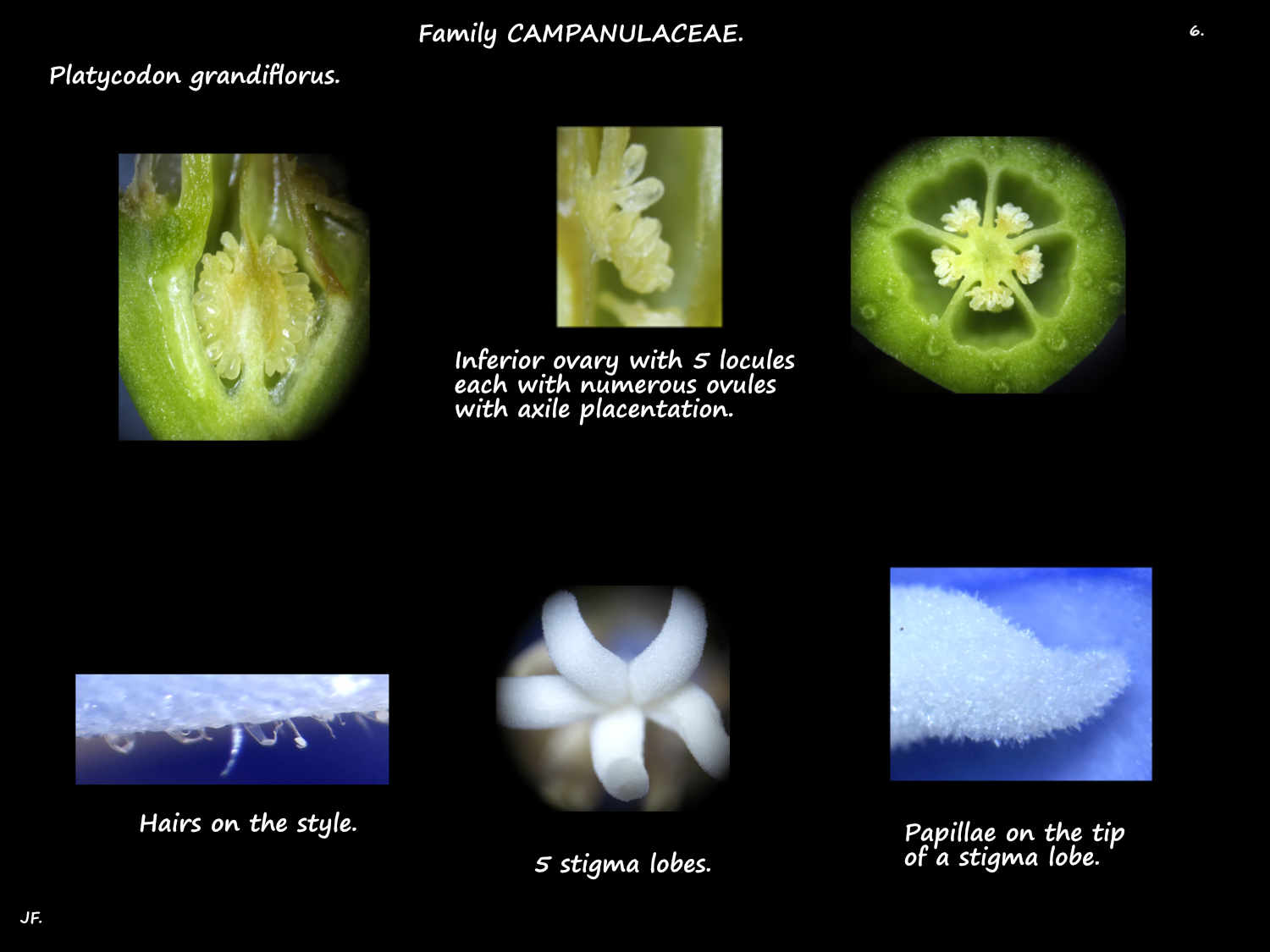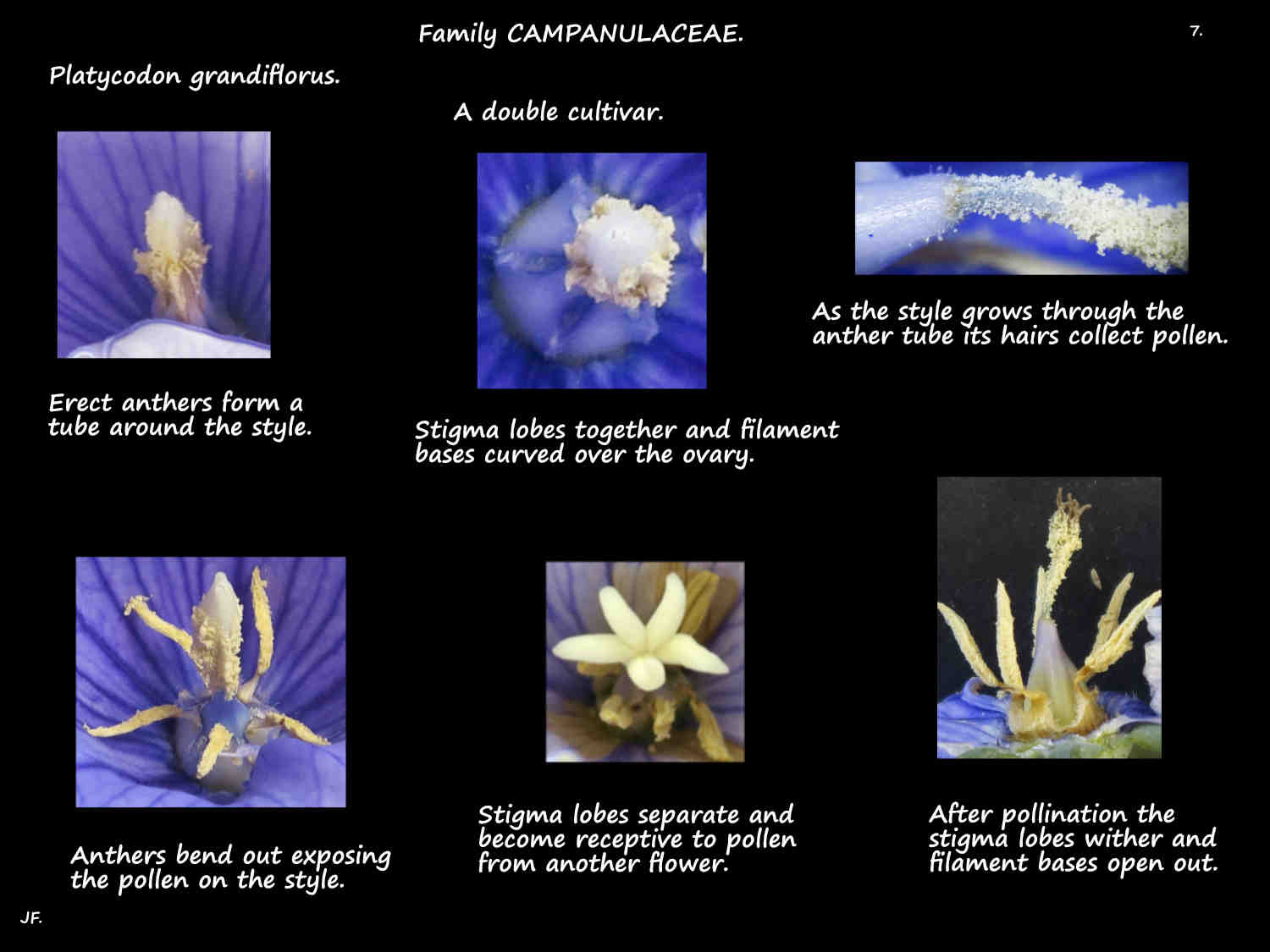Platycodon grandiflorus.
Chinese bellflowers are perennial clumping herbs growing from a thick tuberous taproot.
Erect stems, up to 1.2 m high usually do not branch.
Typically there are no hairs but occasionally there may be a lot.
Leaves are in whorls of 3 (4) but can be alternate or opposite.
On a short or no petiole they are up to 7 cm long and 3.5 cm wide at the base of the stem.
Those at the top are only around 2 cm long and 0.5 cm wide.
Lance-shaped, ovate or elliptic blades have a pointed tip and toothed edge.
The green upper surface has no hairs but there may be some along the veins on the lower surface.
Terminal inflorescences are typically a solitary flower.
Flowers have parts in 5’s with the bases of the sepals, petals and stamens fused to form a hypanthium.
The calyx has 5 narrow triangular lobes that are shorter than their fused bases.
Above the hypanthium the petals, up to 4.5 cm long are fused into a bell-shaped corolla tube with 5 lobes.
Petals are typically blue to purple but there are white and pink forms.
Buds are swollen like a balloon giving plants the common name of Balloon flower.
There are 5 free stamens with wide triangular filament bases that have short hairs (cilia) on the edges.
The anthers are longer than the filaments and in the bud are erect forming an anther tube.
The mostly inferior ovary has 5 locules, sometimes with false septae and one style with 5 stigma lobes.
Each locule has numerous ovules with axile placentation.
Just before, and as the flower is opening, the pollen is released into the anther tube.
Growing through the anther tube, hairs on the upper part of the style collect the pollen.
The anthers then separate and bend outwards away from the style and still closed stigma lobes.
The stigma lobes then spread out like a star and becomes receptive to pollen from another flower.
The fruit are loculicidal capsules that open into the top of each chamber.
The roughly spherical capsules are up to 2.5 by 1.5 cm.
Each chamber has numerous dark seeds with a keel (ridge) down one side.
There are cultivars, some dwarf forms, with single or double flowers in blue, purple, pale pink or white.
J.F.
